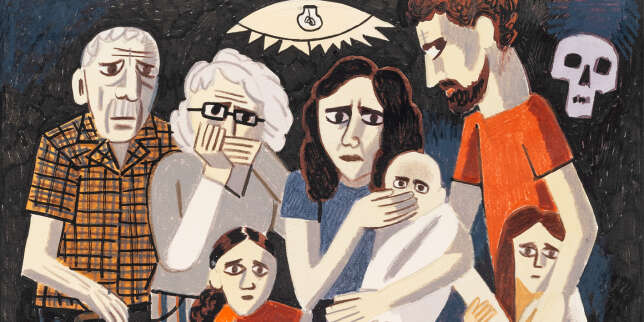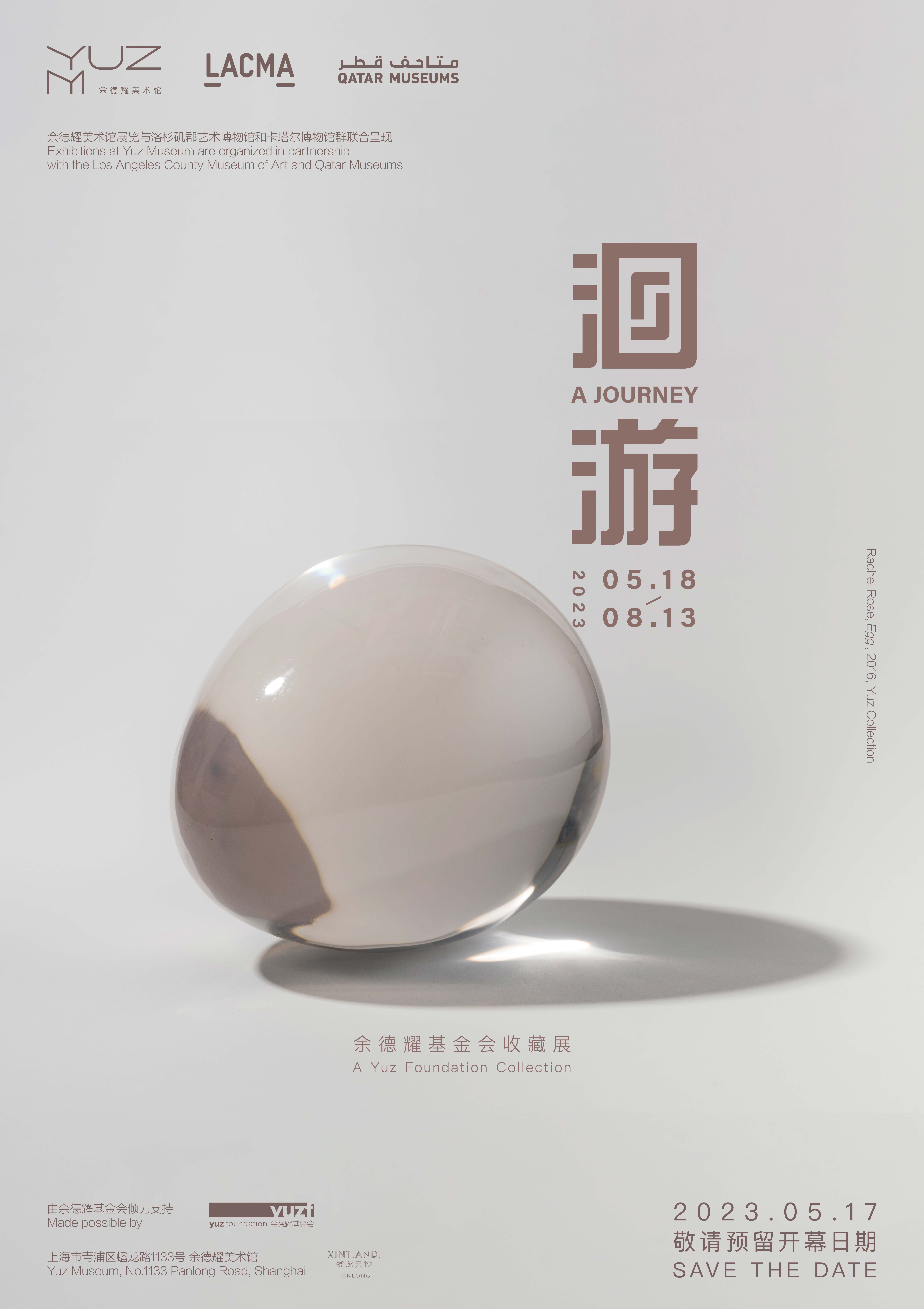Passings
2020 - Drawing & Print (Drawing & Print)
220 x 130 x 4 cm
Tarik Kiswanson
The artist’s Passings series are hand-sewn works composed of radiological scans of items of clothing loaned by the Tiraz Foundation in Jordan. These articles – Palestinian, Jordanian and other Arab costumes from the 19th and 20th centuries from the Widad Kamel Kawar dress collection – are mixed in with contemporary clothing sometimes borrowed from participants in Kiswanson’s performances. In this particular piece, a tracksuit is overlaid with an 18th century Jordanian Robe. These works have been described by Jones as an ‘archaeology of dress’ as a means of rehabilitating cultural heritage and tracing generational connections, ‘subtly nodding toward the ways in which Western culture so often seeks to erase difference.’ These works speak to practices of memory and preservation in the face of cultural and historical shifts.
Tarik Kiswanson is a Palestinian-Swedish artist, poet and writer based in Paris. His family exiled from Jerusalem to North Africa, and later to Jordan before finally arriving in Sweden in the beginning of the 1980s. Kiswanson studied in London and Paris and today splits his time between Europe and the Middle East. His identity is one defined by multiple cultures. His work stems from his own condition of being a first-generation immigrant shaped by the aftermath of the diaspora. It’s about living with the sensation of not belonging anywhere. Throughout his life, he has explored the question of identity, displacement, desire and the ‘in-between’ through writing and sculpture. The artist has described his work—which encompasses sculpture, writing, performance, sound, and video—as being “the border, the window between the iris and the world outside.” The window is less a demarcation between two opposed realms than a portal—a space between. This dynamic interstitial space nurtures his practice and animates his reflections on the human condition. His work evinces an engagement with the poetics of métissage : a means of writing and surviving between multiple conditions and contexts. Notions of rootlessness, regeneration, and renewal are recurring themes in Kiswanson’s oeuvre. His practice examines questions of displacement and interstitiality that specifically relate to the context of what is lost and what is gained, in the first generation of migration. He conceives works that articulate a fluid “politics of identity”, that encompasses the various collisions of culture that have shaped both his personal experience and artistic practice. His body of work can be understood as a cosmology of related conceptual families, each exploring variations on themes like refraction, multiplication, disintegration, hybridity, and polyphony through their own distinct language.
Colors:
Related works sharing similar palette

© » ARTS EQUATOR
Podcast 61: The Media Landscape in Thailand | ArtsEquator Thinking and Talking about Arts and Culture in Southeast Asia Articles Asian Arts Media Roundtable July 11, 2019 Duration: 20 min In our latest podcast, Thai theatre critic Amitha Amranand gives a comprehensive overview of the media landscape in Thailand, discussing the impact of the political and legal system on the arts and the paradoxical freedom that arts journalists have in the country...

© » THEARTNEWSPER
James Ensor: series of anniversary shows to reveal ‘the man behind the mask’ Art market Museums & heritage Exhibitions Books Podcasts Columns Technology Adventures with Van Gogh Search Search Exhibitions news James Ensor: series of anniversary shows to reveal ‘the man behind the mask’ Belgium commemorates 75 years since the artist's death with a year-long season of exhibitions and events, often highlighting the lesser known aspects of his work Eddi Fiegel 15 December 2023 Share James Ensor, Pierrot and skeleton in a yellow robe (1893) Photo: Hugo Maertens The Belgian artist James Ensor may be easily recognisable for the macabre faces that so often feature in his works, but a major new season of exhibitions and events in his home country aims to reveal “the man behind the mask”...

© » KADIST
Ashmina Ranjit
2020While most of Ashmina Ranjit’s work has been large-scale installations, often immersive and site-specific, the series Hair Warp – Travel Through Strand of Universe is a brilliant concentration of both her beliefs and aesthetic...

© » KADIST
Sin Wai Kin
2017A woman you thought you knew by Sin Wai Kin originates from a performance series titled A View from Elsewhere ...

© » KADIST
Colter Jacobsen
2010The title Untitled Passport II was first used by Felix Gonzalez-Torres in an unlimited edition of small booklets, each containing sequenced photographs of a soaring bird against an open sky...

© » KADIST
Lam Tung Pang
2013Lam Tung Pang created Sketches from train ride Chicago to San Francisco during his travels through the United States researching American curatorial strategies for representing traditional Chinese painting in museums and cultural institutions...

© » LE MONDE
Au Musée juif de New York, requiem expressionniste pour les victimes du 7 octobre nav_close_menu Cet article vous est offert Pour lire gratuitement cet article réservé aux abonnés, connectez-vous Se connecter Vous n'êtes pas inscrit sur Le Monde ? Inscrivez-vous gratuitement Article réservé aux abonnés « Oct...

© » KADIST
Rivane Neuenschwander
2007Mapa-Mundi BR (postal) is a set of wooden shelves holding postcards that depict locations in Brazil named for foreign countries and cities...

© » LENS CULTURE
49/23 — Considering Technology, AI and Photography - Photographs by Gregory Eddi Jones | Interview by Liz Sales | LensCulture Feature 49/23 — Considering Technology, AI and Photography In his new thought-provoking series “49/23,” Gregory Eddi Jones considers the implications of rapidly advancing technology by intertwining vintage photography and AI-generated images...

© » LENS CULTURE
Cultural Changes at the Coldest Place on Earth — A Photo Story from Yakutsk - Photographs by Alex Vasyliev | Essay by Marigold Warner | LensCulture Feature Cultural Changes at the Coldest Place on Earth — A Photo Story from Yakutsk Photographer Alexey Vasyliev offers an intimate look into the life and changing culture of the Evens, an indigenous tribe in his hometown of Yakutsk — one of the coldest places on Earth...










